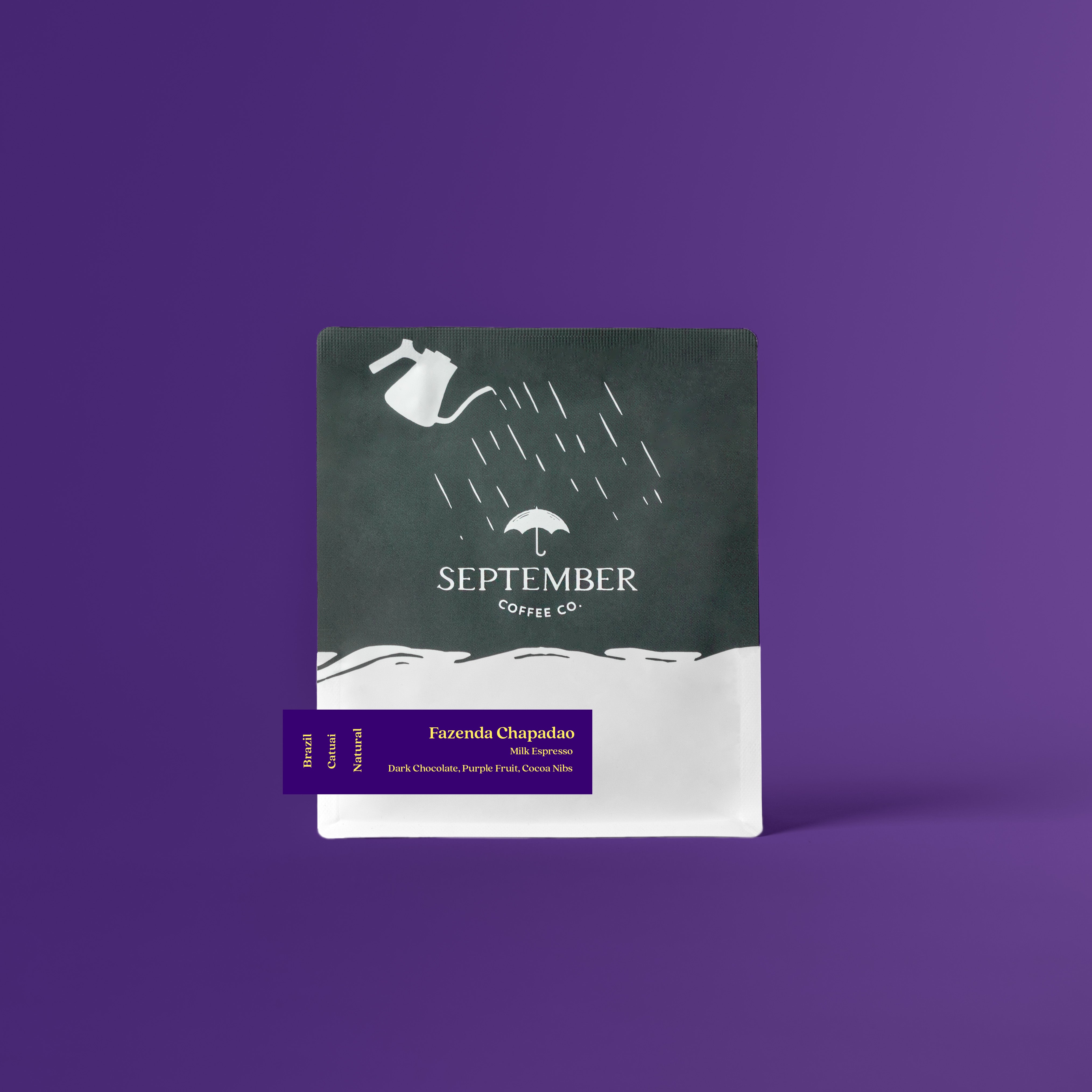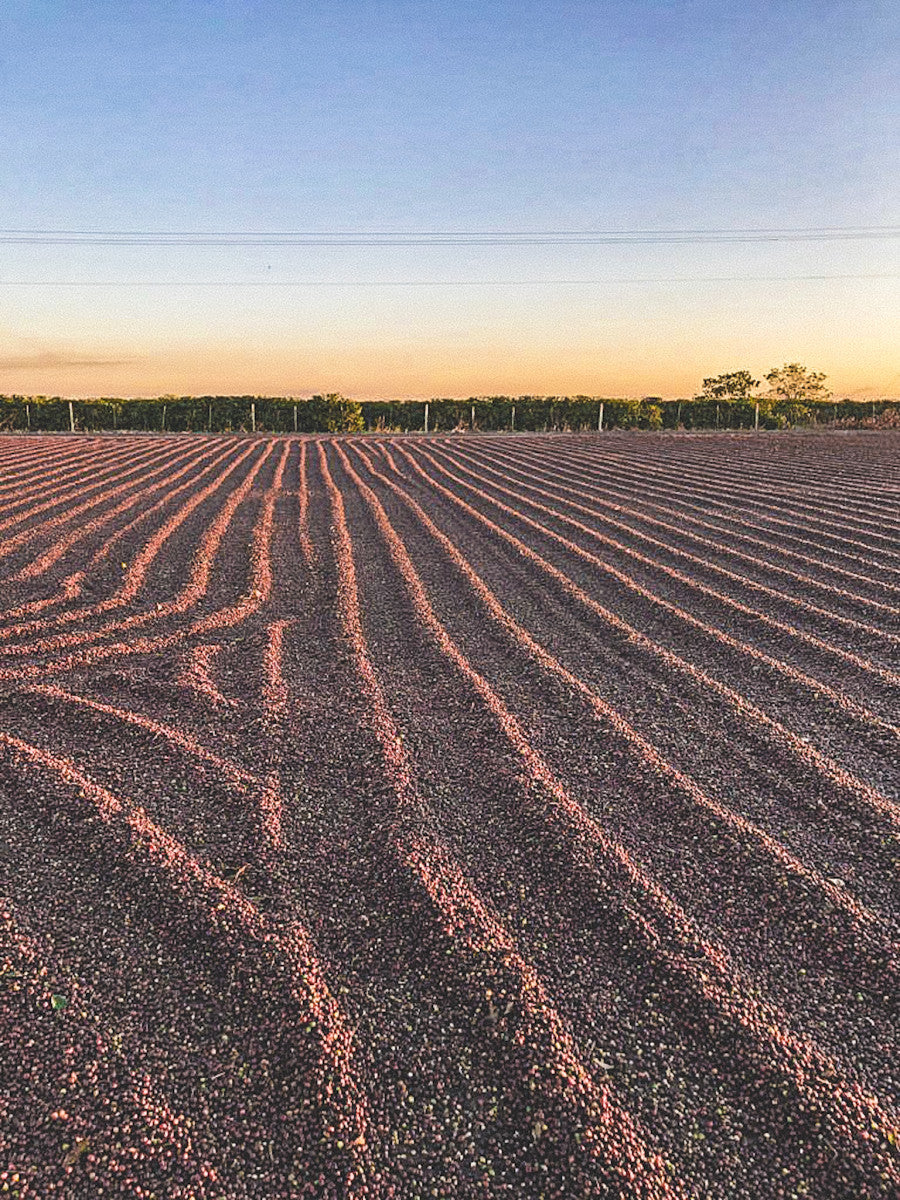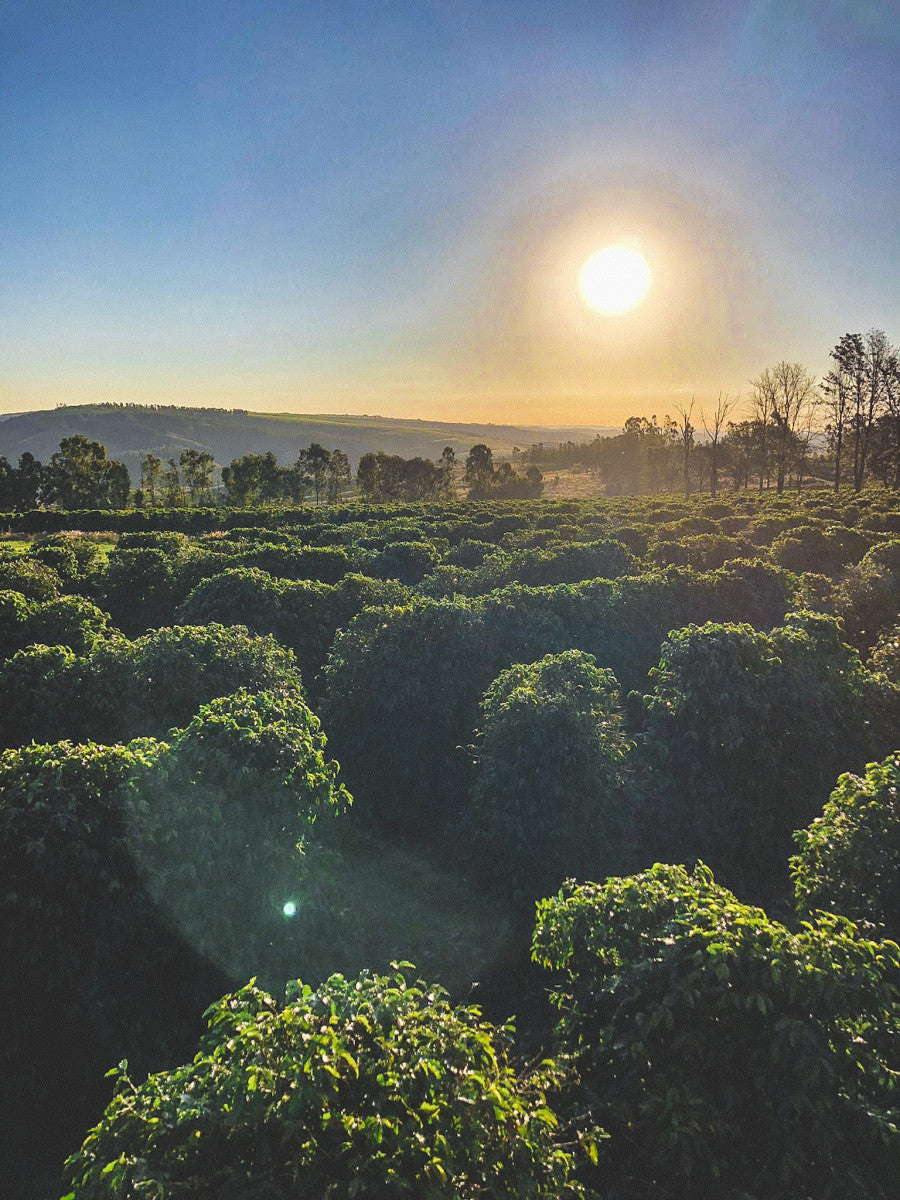


Fazenda Chapadao - Brazil Milk Espresso
Our first time featuring coffee from Fazenda Chapadao and producing brothers Gustavo and Rodrigo Alvarenga. This milk espresso offering is sweet, full bodied and memorable as espresso or with dairy. In the cup we get dark chocolate, sweet purple fruits like plum and grape, cocoa nibs, and caramel.
Fazenda Chapadao - Brazil Milk Espresso
250G
September Coffee Roastery
119 Iber Road
Unit 9
Ottawa ON K2S 1E7
Canada
- Variety: Red & Yellow Catuai
- Country: Brazil
- Region: Pratinha, Minas Gerais
- Process: Natural
- Altitude: 1215 MASL
- Harvest: Late 2024
- Roast Level: Medium
 In the cup
In the cup
In the cup we get sweet cocoa nibs, purple fruits like plums and grapes, dark chocolate and sticky caramel. This coffee is full bodied and low in acidity.
 Funky
Funky
 Experimental
Experimental
 About The Producer
About The Producer
Gustavo and Rodrigo’s father (Mr. Ciro) first planted coffee in 1989, a bold move in a region then deemed unfit for coffee cultivation; for years, cattle dominated the land. However, in 2009, Gustavo joined the farm after high school, sparking a shift toward specialty coffee. Rodrigo followed in 2018, leaving a banking career to focus on quality control and roasting, later launching their micro-roasting brand, Artefato Cafés Especiais. Today, every step—from planting seedlings to roasting—is handled by the family, ensuring unparalleled attention to detail. Their commitment extends to sustainability, with 49% of the farm preserved as native forest and Rainforest Alliance certification guiding their practices.
 Variety
Variety
A cross between highly productive Mundo Novo and compact Caturra, made by the Instituto Agronomico (IAC) of Sao Paulo State in Campinas, Brazil. The plant is highly productive compared to Bourbon, in part because of its small size, which allows plants to be closely spaced; it can be planted at nearly double the density. The plant’s shape makes it relatively easy apply pest and disease treatments. It is mainly characterized by great vigor and its low height; it is less compact than Caturra. It is highly susceptible to coffee leaf rust. There are yellow-fruited and red-fruited types, and have since been many selections in different countries. The cultivar was created in 1949 from a crossing of yellow Caturra and Mundo Novo, and initially called H-2077. The variety was released in Brazil 1972 after pedigree selection (selection of individual plants through successive generations) and is in wide cultivation there. In Brazil, there are multiple lines of Catuai available; some are notable for their high productivity.
